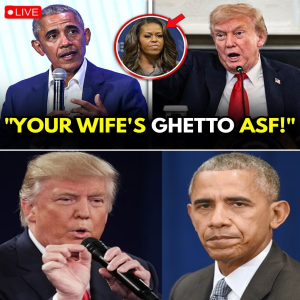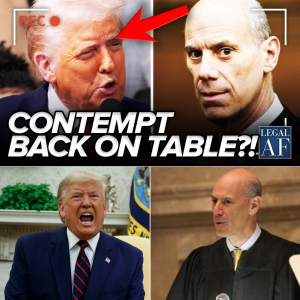A Fictional Jimmy Kimmel–JD Vance “On-Air Roast” Goes Viral, Reflecting the Blurred Line Between Political Satire and News
A sensational headline surged across social platforms this week — “JD Vance ERUPTS After Jimmy Kimmel EXPOSES Him LIVE ON TV — The Brutal On-Air Roast That Sent Capitol Hill Into CHAOS.”
Despite its dramatic tone and suggestion of a televised confrontation, the event never happened. The headline is part of a wave of fictional political content that circulates online, blending satire with the aesthetics of breaking news and prompting widespread confusion about what is real.
The story spread quickly across TikTok, Instagram and X, encouraging rapid resharing through bold “BREAKING” labels, lightning emojis and stylized video edits. Many users encountered it as a short clip framed like a late-night meltdown, even though no such incident appears in any broadcast involving Kimmel or Senator JD Vance of Ohio.
How the Fiction Took Hold

As with many viral political narratives, the story’s traction derived not from evidence but from its emotional framing. It merged familiar cultural roles — Kimmel as the late-night satirist, Vance as a rising conservative politician — into an imagined confrontation that resembled a scene from political entertainment rather than actual legislative life.
“There’s a template these viral stories follow,” said Dr. Lena Morrow, a researcher in political communication at the University of Chicago. “They pair a politician with a celebrity critic, add a dramatic clash and package it with the urgency of breaking news. It feels real even when it’s not.”
The fabricated narrative portrayed Kimmel unleashing a comedic takedown, prompting a heated reaction from Vance and causing “chaos” in Washington. No such roast occurred, and there is no record of Vance responding to anything similar in recent days.
Why the Narrative Felt Familiar
Observers say the story resonated because it reflects a cultural environment where political identity is increasingly shaped through entertainment. Kimmel and other late-night hosts have regularly used their platforms to comment on national politics. Meanwhile, Vance has become a high-profile figure in conservative politics following the success of his memoir and his rise in the Senate.
Their distinct personas — Kimmel’s comedic irreverence and Vance’s ideological assertiveness — make them natural foils in the public imagination. Even in a fictional scenario, audiences can easily project a confrontation between them.
“This is political fan fiction,” Dr. Morrow explained. “It allows viewers to imagine the political conflicts they expect or want to see, regardless of what actually took place.”
Late-Night Satire as a Source of Misinterpretation
The spread of the narrative also highlights a broader shift in how Americans interpret late-night comedy. Once clearly understood as satire, monologues now circulate as short clips detached from their comedic context. Without the surrounding cues — studio laughter, framing jokes, guest interviews — these clips can be reframed as political commentary or even quasi-journalism.
“People sometimes forget that late-night hosts are entertainers, not reporters,” said Dr. Michael Haskins, a professor of media ethics at Syracuse University. “But online, when the visual packaging looks identical to news updates, those distinctions blur.”
This blurring makes it easier for fictional stories to take root. A fake “roast” presented with enough visual polish can appear indistinguishable from a real late-night moment.
The Dynamics of Viral Misinformation
:max_bytes(150000):strip_icc():focal(756x500:758x502)/Jimmy-Kimmel-JD-Vance-093025-4c052eff4e26473d8c8fe83dd51c7f4b.jpg)
Political misinformation today often spreads not as outright falsehoods, experts say, but as exaggerated or invented scenarios crafted to feel emotionally true. These posts thrive on social media because they deliver humor, shock or partisan satisfaction — all of which trigger algorithmic amplification.
For some viewers, the fictional Kimmel–Vance confrontation served as a cathartic portrayal of tensions between Hollywood and conservative politics. For others, the narrative reflected their belief that political figures are unfairly targeted by media personalities. In both cases, engagement was driven less by fact than by cultural identity.
“This is storytelling, not reporting,” Dr. Haskins said. “But online, those categories aren’t separated the way they used to be.”
The Broader Implications
Although the headline is false, the reaction to it reveals deeper truths about the digital media landscape: the public’s appetite for personality-driven conflict, the merging of political discourse with entertainment formats and the fragility of informational boundaries.
Repeated exposure to fictional political moments can shape public perception over time, not because people mistake them for facts, but because they reinforce existing beliefs and emotional narratives.
Conclusion
No on-air confrontation occurred. Jimmy Kimmel did not “expose” Senator JD Vance, and there was no chaos on Capitol Hill tied to such an exchange.
Yet the viral rise of the fabricated headline illustrates how quickly political fiction can overshadow factual reporting in the attention economy.
In a media environment increasingly shaped by spectacle, Americans face a growing challenge: distinguishing journalistic reality from the digital stories that merely imitate it.






